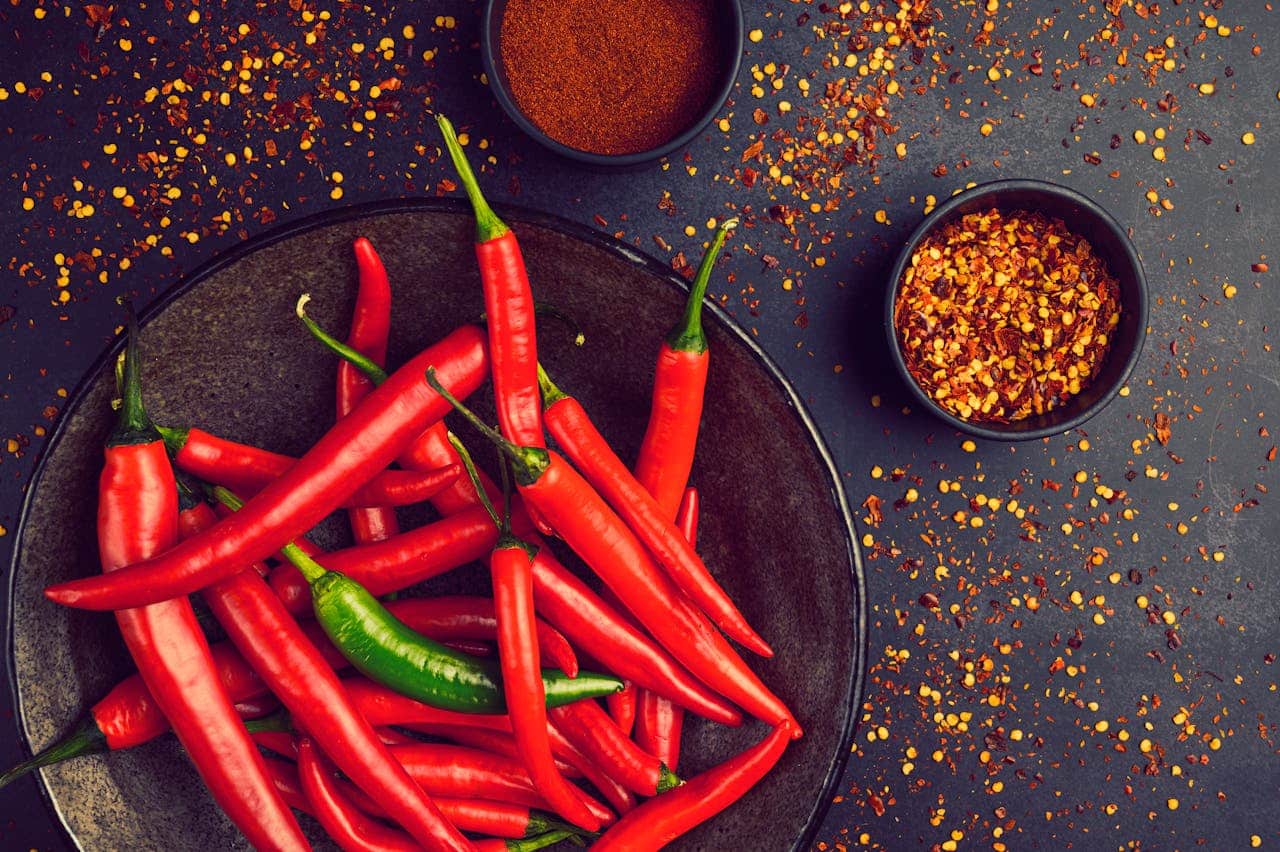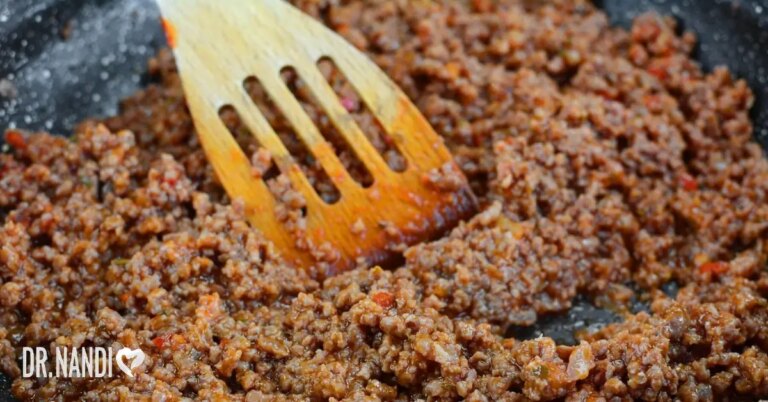For centuries, healers and herbalists have turned to one humble spice in moments of crisis, relying on its extraordinary ability to heal and protect. This fiery ingredient isn’t just about adding flavor to your meals—it holds secrets that could revolutionize how we think about natural health remedies. A simple pinch has the power to support your heart, ease pain, and even fight off life-threatening conditions.
What is this mysterious kitchen staple that’s as potent in the medicine cabinet as it is in the spice rack? To uncover its remarkable story and life-saving potential, we must first explore the wisdom of those who championed its use long before modern science caught on.
Cayenne Pepper’s Part in the History of Medicine

Cayenne pepper has been celebrated for centuries as a powerful remedy, but its rise in modern medicine owes much to the innovative work of herbalists like Dr. John Christopher. Known for his groundbreaking practices during World War II, Dr. Christopher used cayenne pepper as a natural alternative to pharmaceuticals. This fiery spice became a cornerstone of his treatments, proving its worth as more than just a kitchen staple.
Drafted into the Army during WWII, Dr. Christopher’s unique approach to medicine made history. He treated soldiers’ skin infections using herbs, eventually becoming the only practicing herbalist in the U.S. Army during the war. Among his discoveries, cayenne pepper stood out as a lifesaving herb.
Dr. Christopher famously asserted that cayenne could dramatically impact heart attack situations by regulating blood flow and ensuring balanced circulation. However, it’s important to clarify that there is currently no scientific evidence to prove that cayenne pepper can stop a heart attack in its tracks or that it can be used as an emergency remedy for such acute conditions. The benefits that Dr. Christopher observed may have been related to the overall improvements in cardiovascular function.
The therapeutic properties of cayenne pepper, particularly its active compound capsaicin, are indeed supported by research, mostly in the context of prevention. Dr. Richard Schulze, another renowned herbalist, once stated, “If you master only one herb in your life, master cayenne pepper. It is more powerful than any other.”
Cayenne’s most active compound, capsaicin, is the key to its medicinal potency. Capsaicin acts as a circulatory stimulant, dilating blood vessels and improving blood flow. This not only aids in heart health but also contributes to other cayenne pepper benefits like reducing blood pressure and protecting against cardiovascular disease.
Science-Backed Health Benefits of Cayenne Pepper
Beyond its culinary appeal, cayenne pepper offers a multitude of health benefits, many of which are supported by scientific research. These advantages stem primarily from capsaicin, the active compound responsible for cayenne’s characteristic heat.
1. Blood Pressure Regulation
Animal studies suggest that capsaicin can reduce high blood pressure and calm inflammation, indicating potential heart health benefits that warrant further investigation in human populations. Meanwhile, human observational studies reinforce this potential, showing that people who regularly consume chili peppers are 13% less likely to die prematurely compared to those who avoid spicy foods. This reduced risk is primarily linked to fewer heart-related issues, such as heart attacks and strokes.
Moreover, incorporating cayenne pepper into meals has been associated with lower salt consumption. Since excessive salt intake can elevate blood pressure and increase heart disease risk, substituting it with cayenne pepper might be a heart-healthy dietary strategy.
2. Migraine and Headache Relief
Capsaicin, the active component in cayenne pepper, has shown promise in treating migraines and cluster headaches by desensitizing sensory neurons involved in pain transmission. A pivotal 1998 study in The Clinical Journal of Pain, which analyzed data from 33 studies, found that topical application of capsaicin effectively reduced pain more than placebos, particularly for cluster headaches.
Further research by Massachusetts General Hospital supported these findings, demonstrating that patients who applied diluted capsaicin inside the nose experienced a significant decrease in headache severity. This method of application allows capsaicin to act directly on the nerve fibers that trigger pain, providing targeted and effective relief.

3. Metabolism Enhancement and Weight Management
Capsaicin has been shown to boost metabolism by increasing thermogenesis—the process by which the body generates heat and burns calories. A study published in Nutrition Research found that capsaicin consumption led to a significant rise in energy expenditure, suggesting its potential role in weight management.
Thanks to its capsaicin content, cayenne pepper can aid in appetite suppression and increased fat oxidation. Regular intake may reduce hunger cravings, contributing to lower calorie intake.
4. Digestive Health Improvement
Contrary to the belief that spicy foods cause heartburn, capsaicin can enhance the digestive process. It stimulates nerves in the stomach that trigger the production of digestive fluids, aiding in the efficient breakdown of food. This stimulation helps improve overall digestion and can counteract discomfort typically associated with less optimal digestive function.
Moreover, research indicates that capsaicin may play a role in preventing stomach ulcers, particularly those caused by the H. pylori bacteria, a common culprit behind many gastric ulcers. Beyond aiding in digestion, capsaicin has been observed to influence the gut’s bacterial balance positively. It may boost the presence of good bacteria in the microbiome, which is crucial for not only digestion but also for a robust immune system.
5. Pain Relief
When applied topically, capsaicin helps diminish pain by reducing substance P, a chemical that signals pain to the brain. This action makes it effective enough that the FDA has approved capsaicin-based treatments for certain nerve pain conditions. Research also shows promising results for capsaicin’s role in alleviating arthritis pain when used in creams applied directly to painful areas.
Despite its benefits, topical capsaicin treatments can sometimes cause a burning sensation, which although generally temporary, might be uncomfortable for some users. Further studies are investigating oral capsaicin supplements as another way to relieve pain, particularly for athletes, although more research is needed to fully understand the best use and dosage.
Cayenne Pepper Remedies You Can Make at Home
From soothing sore muscles to boosting your metabolism and supporting immune health, cayenne pepper can be transformed into various home remedies that leverage its therapeutic properties. Here, you’ll find three simple recipes to create effective, natural treatments using cayenne pepper. Whether applied topically or consumed, these remedies offer natural solutions to everyday health concerns, allowing you to tap into the benefits of cayenne pepper right from your kitchen.
1. Cayenne Pepper Salve for Pain Relief
This salve harnesses the pain-relieving properties of capsaicin found in cayenne pepper. Capsaicin reduces the amount of substance P—a chemical signal that carries pain messages to the brain. Use this salve to relieve muscle soreness, joint pain, or arthritis discomfort.
Ingredients:
- 1/2 cup olive oil or coconut oil
- 2 tablespoons cayenne pepper powder
- 1/4 cup grated beeswax
Instructions:
- Combine the oil and cayenne pepper in a double boiler and gently heat the mixture for about 5-10 minutes over low heat, stirring frequently.
- Add the grated beeswax and stir until completely melted and mixed thoroughly.
- Pour the mixture into a jar and let it cool to room temperature, where it will solidify into a salve.
- Apply a small amount of the salve to the affected area to relieve muscle pain and arthritis-related discomfort. Be sure to wash your hands after applying and avoid contact with eyes.
2. Cayenne Pepper Tea for Digestion and Metabolism
This simple tea can help kickstart your metabolism in the morning and aid in digestive health. Cayenne pepper boosts metabolic rate by inducing thermogenesis, the process of creating heat in the body, which burns calories. Lemon and honey add a refreshing taste and help to soothe the throat and balance the intense heat of cayenne.
Ingredients:
- 1/4 teaspoon cayenne pepper
- 1 tablespoon lemon juice
- 1 teaspoon honey
- 1 cup hot water
Instructions:
- Add cayenne pepper, lemon juice, and honey to a cup of hot water.
- Stir well until the honey is dissolved and the ingredients are well mixed.
- Drink while warm to aid digestion and stimulate metabolism.
3. Cayenne Pepper and Turmeric Drink for Immune Boosting
This drink combines the immune-boosting properties of cayenne pepper with the anti-inflammatory benefits of turmeric and the digestive benefits of apple cider vinegar. It’s ideal for cold and flu season or any time you feel your immune system could use a boost.
Ingredients:
- 1/2 teaspoon cayenne pepper
- 1/2 teaspoon turmeric powder
- 1 tablespoon apple cider vinegar
- 2 tablespoons honey
- Juice of half a lemon
- 1 cup warm water
Instructions:
- In a glass, combine the cayenne pepper, turmeric powder, and warm water.
- Add apple cider vinegar, honey, and lemon juice.
- Mix well until all ingredients are well combined.
- Drink this mixture once daily to boost your immune system.
My Personal RX on Stocking a Healthier, Natural Remedy-Friendly Pantry
Creating a pantry that supports both your cooking and wellness goals is a great step towards a healthier lifestyle. With a focus on natural remedies and wholesome ingredients, you can ensure that your kitchen not only feeds your family but also nurtures their health. Here are some tips to help you transform your pantry into a treasure trove of health and healing:
- Prioritize Whole Foods: Stock up on whole foods such as whole grains, legumes, nuts, and seeds. These are not only foundational for nutritious meals but also offer a variety of health benefits, from lowering cholesterol to enhancing gut health.
- Incorporate Healing Spices: Make room for spices like cayenne pepper known for their medicinal properties. Other beneficial spices include turmeric for its anti-inflammatory effects, cinnamon for blood sugar control, and ginger for digestive health.
- Choose Healthy Fats: Replace refined oils with healthier options like olive oil, coconut oil, and avocado oil. These oils provide essential fatty acids and antioxidants that are beneficial for heart health and can withstand different cooking temperatures without losing their nutritional value.
- Keep a Variety of Teas: Stock a variety of herbal teas such as green tea, chamomile, peppermint, and echinacea. Herbal teas are great for hydration, soothing upset stomachs, reducing inflammation, and can be a calming nighttime ritual.
- Add Vitamin K2 with D3 Supplements: Keeping Vitamin K2 with D3 supplements in your pantry can be a game-changer for bone health and immune system support. These vitamins work synergistically not only to improve bone density but also to enhance the immune response and cardiovascular health.
- Use Natural Sweeteners: Opt for natural sweeteners over refined sugar. Raw honey, maple syrup, and dates are excellent choices not only for sweetening but also for their nutrients and lower impact on blood sugar levels.
- Utilize Dried or Canned Foods: Dried fruits and canned goods like tomatoes, beans, and coconut milk can be handy for quick meals and are also beneficial for health. Just be sure to choose items without added sugars or excessive sodium.
- Grow Your Own Herbs: If space allows, start a small herb garden in your kitchen or balcony. Fresh herbs like basil, mint, and rosemary can boost the flavor of your dishes while also offering health benefits.
- Incorporate Superfoods in Meals: Stock up on superfoods that are known for their dense nutrients and health benefits. Items like cayenne pepper, which can boost metabolism, ginger for digestion, and turmeric for its anti-inflammatory properties are excellent staples. My Superfoods Cookbook provides numerous recipes that creatively incorporate these items into your daily diet.
- Organize for Accessibility: Keep healthier options at the front of your pantry to make them more accessible and easier to use. This simple organization trick can help you make better food choices more consistently.
Sources:
- The Power of Cayenne Pepper | SchoolofNaturalmedicine.com. (2023, December 28). https://schoolofnaturalmedicine.com/2023/12/28/the-power-of-cayenne-pepper/
- Chauhan, M. (2018). Blood Circulation Stimulation Properties of Cayenne Pepper:A Review. ResearchGate. https://www.researchgate.net/publication/326060740_Blood_Circulation_Stimulation_Properties_of_Cayenne_PepperA_Review
- Rigamonti, A. E., Casnici, C., Marelli, O., De Col, A., Tamini, S., Lucchetti, E., Tringali, G., De Micheli, R., Abbruzzese, L., Bortolotti, M., Cella, S. G., & Sartorio, A. (2018). Acute administration of capsaicin increases resting energy expenditure in young obese subjects without affecting energy intake, appetite, and circulating levels of orexigenic/anorexigenic peptides. Nutrition Research, 52, 71–79. https://doi.org/10.1016/j.nutres.2018.02.002
- O’Connor, A. (2007, October 30). The Claim: Cayenne Peppers Can Cure Headaches. The New York Times. https://www.nytimes.com/2007/10/30/health/30real.html
- Munjuluri, S., Wilkerson, D. A., Sooch, G., Chen, X., White, F. A., & Obukhov, A. G. (2021). Capsaicin and TRPV1 channels in the cardiovascular system: the role of inflammation. Cells, 11(1), 18. https://doi.org/10.3390/cells11010018
- Zhong, B., Ma, S., & Wang, D. H. (2018). Ablation of TRPV1 elevates nocturnal blood pressure in Western diet-fed mice. Current Hypertension Reviews, 15(2), 144–153. https://doi.org/10.2174/1573402114666181031141840
- Chopan, M., & Littenberg, B. (2017). The Association of Hot red chili Pepper Consumption and Mortality: A Large Population-Based Cohort Study. PLoS ONE, 12(1), e0169876. https://doi.org/10.1371/journal.pone.0169876
- Satyanarayana, M. N. (2006). Capsaicin and gastric ulcers. Critical Reviews in Food Science and Nutrition, 46(4), 275–328. https://doi.org/10.1080/1040-830491379236
- Chung, M., & Campbell, J. (2016). Use of capsaicin to treat pain: mechanistic and therapeutic considerations. Pharmaceuticals, 9(4), 66. https://doi.org/10.3390/ph9040066
- Chung, M., & Campbell, J. (2016b). Use of capsaicin to treat pain: mechanistic and therapeutic considerations. Pharmaceuticals, 9(4), 66. https://doi.org/10.3390/ph9040066
- Efficacy of symptomatic control of knee osteoarthritis with 0.0125% of capsaicin versus placebo. (2010, October 1). PubMed. https://pubmed.ncbi.nlm.nih.gov/20973322/











 Subscribe to Ask Dr. Nandi YouTube Channel
Subscribe to Ask Dr. Nandi YouTube Channel










